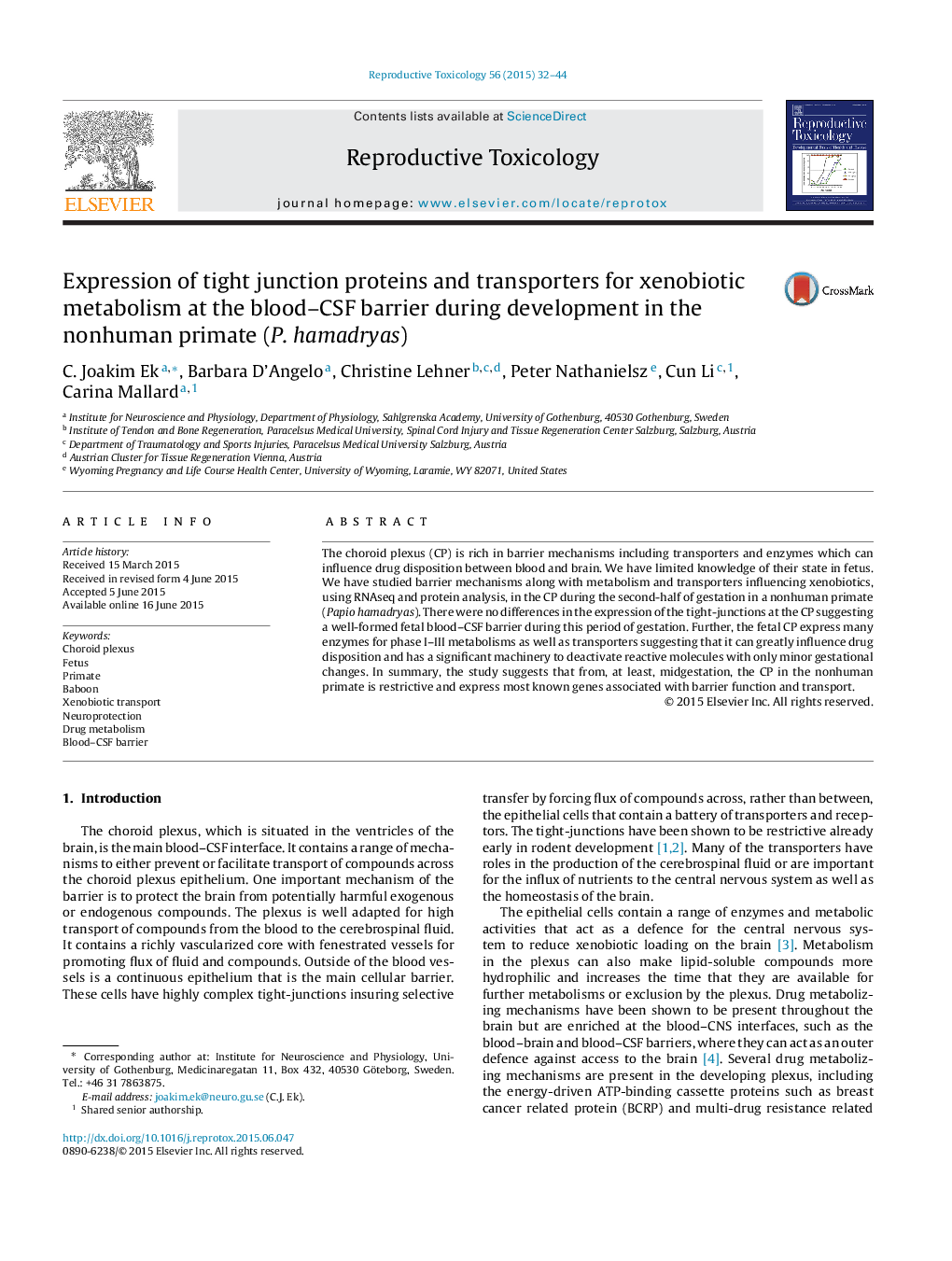| Article ID | Journal | Published Year | Pages | File Type |
|---|---|---|---|---|
| 5858296 | Reproductive Toxicology | 2015 | 13 Pages |
â¢Study of the fetal nonhuman primate choroid plexus in relation to neuroprotection.â¢Combination of RNAseq and protein analysis.â¢Barrier mechanisms of choroid plexus are developed in fetus.â¢Phase I-III metabolisms and antioxidant genes are highly expressed in plexus.â¢Fetal choroid plexus can influence xenobiotics and nutrient supply into brain.
The choroid plexus (CP) is rich in barrier mechanisms including transporters and enzymes which can influence drug disposition between blood and brain. We have limited knowledge of their state in fetus. We have studied barrier mechanisms along with metabolism and transporters influencing xenobiotics, using RNAseq and protein analysis, in the CP during the second-half of gestation in a nonhuman primate (Papio hamadryas). There were no differences in the expression of the tight-junctions at the CP suggesting a well-formed fetal blood-CSF barrier during this period of gestation. Further, the fetal CP express many enzymes for phase I-III metabolisms as well as transporters suggesting that it can greatly influence drug disposition and has a significant machinery to deactivate reactive molecules with only minor gestational changes. In summary, the study suggests that from, at least, midgestation, the CP in the nonhuman primate is restrictive and express most known genes associated with barrier function and transport.
